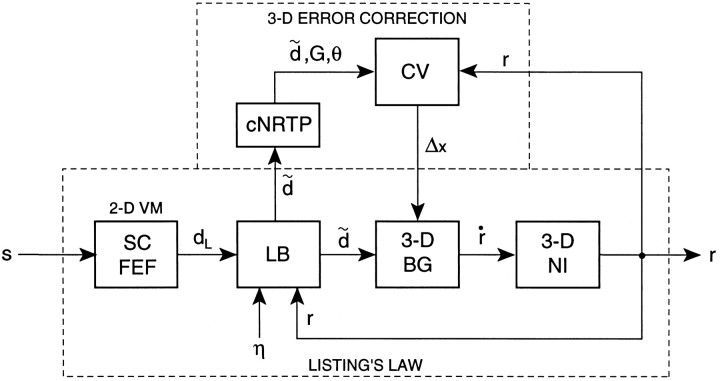Fig. 9.
Conceptual model of 3-D saccade generation. Listing’s law results from the operation of two separate pathways: the direct visuomotor pathway implements Listing’s law on the basis of crude commands. Retinal error, s, is mapped onto a desired eye displacement in Listing’s plane, dL = (dy, dz), by the initial processing stages of the visuomotor system [VM, comprising superior colliculus (SC) as well as frontal eye fields (FEF)]. Listing’s Box (LB) transforms the 2-D visuomotor signal into a 3-D ocular rotation signal by combining the nonideal displacement command with initial eye position. The latter is generated by the 3-D neural integrator (NI). There are several ways of combining these signals (see text), but in this scheme LB generates a 3-D desired eye displacement signal in Listing’s plane, d = (0, dy, dz). However, noise, η, enters the system at this stage: d̃ = d + η. As a result, the 3-D burst generator (BG) issues an eye velocity command (r˙) to the neural integrator and the oculomotor neurons that may be endowed with small saccadic deviations from Listing’s plane. The cNRTP–cerebellar pathway is involved in torsional error correction. To that end, the cerebellar vermis (CV) receives the crude 3-D displacement command from LB, d̃, as well as the current 3-D eye position signal. The torsional component of eye position, rx, is reset whenever the torsional position exceeds a threshold, θ, by updating the input for the 3-D BG at the upcoming saccade: Δx = −G · (rx − d̃x). Here, G is a gain that depends on the integrity of the cNRTP (see Discussion).

